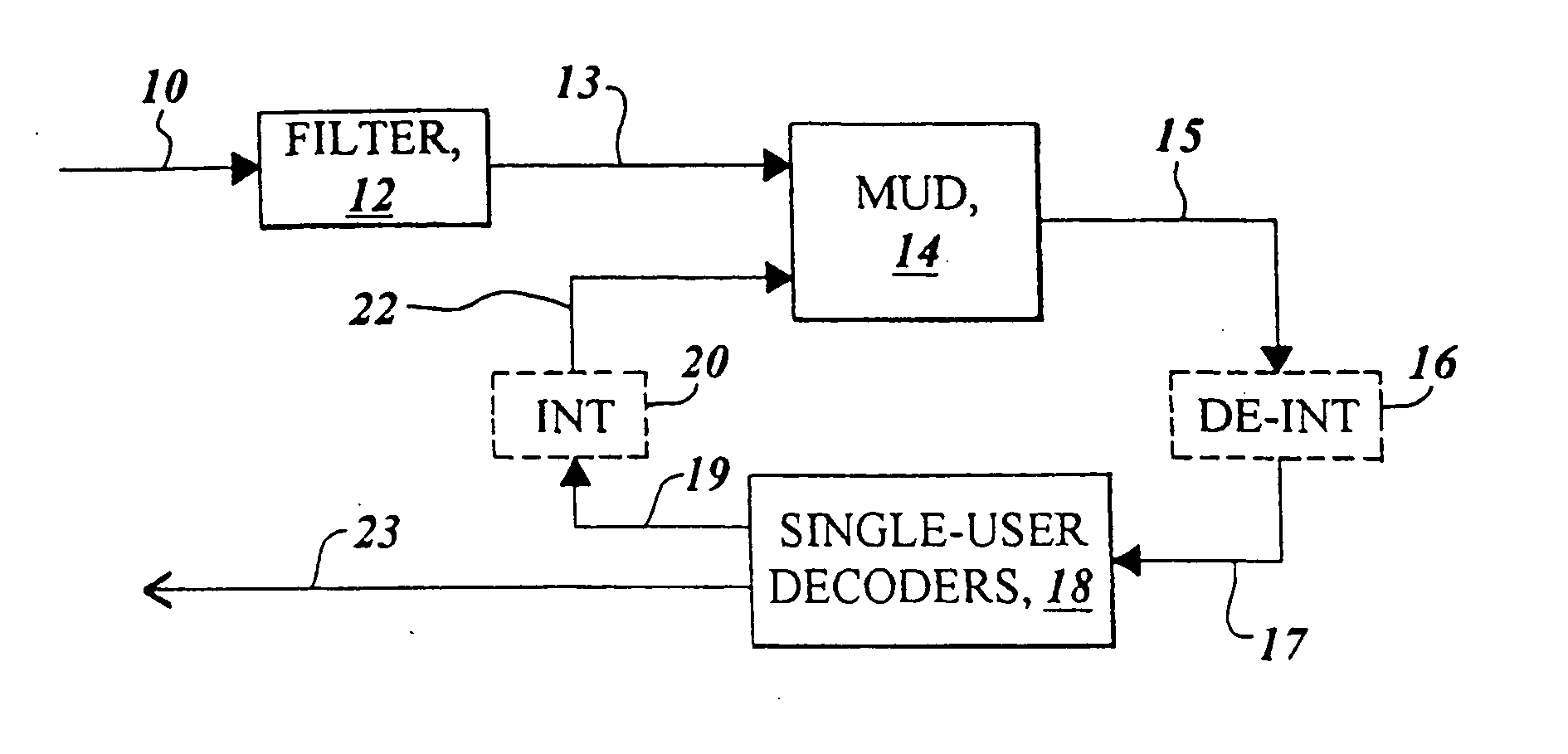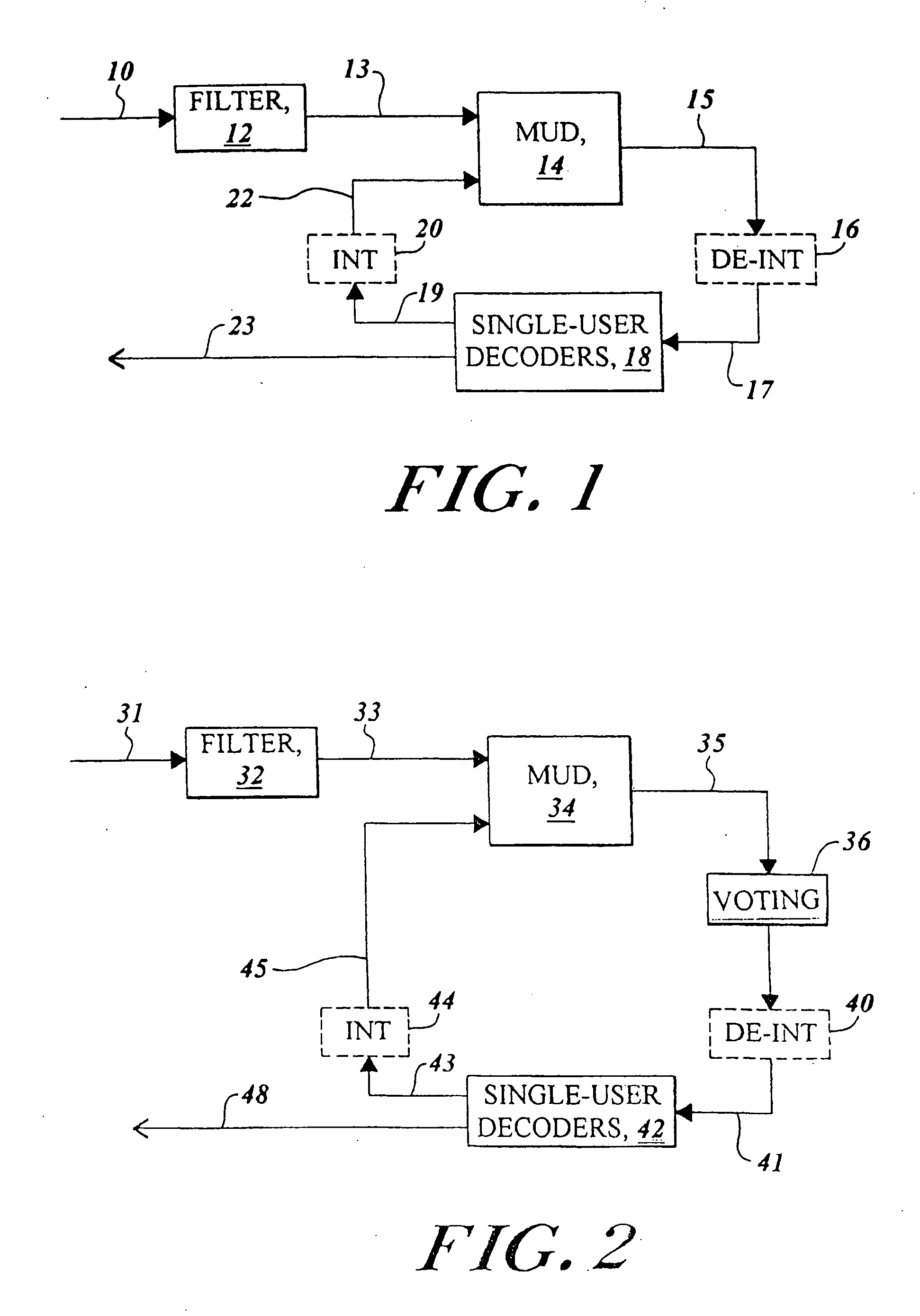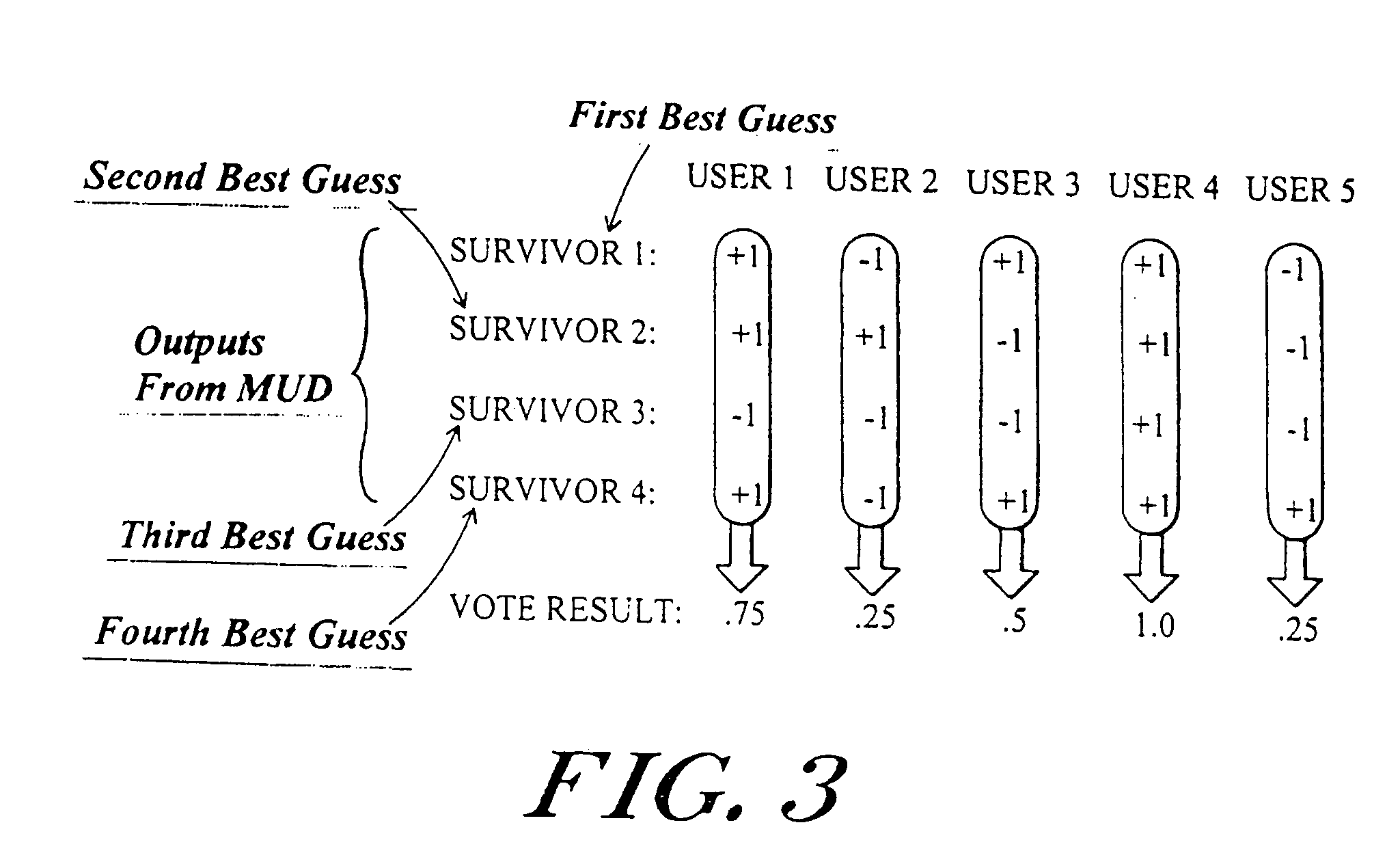Voting system for improving the performance of single-user decoders within an iterative multi-user detection system
a detection system and multi-user technology, applied in the field of telecommunications, can solve the problems of inordinate time and obviating soft output calculation, and achieve the effect of reducing errors, improving performance, and reducing error proneness
- Summary
- Abstract
- Description
- Claims
- Application Information
AI Technical Summary
Benefits of technology
Problems solved by technology
Method used
Image
Examples
Embodiment Construction
[0034] It will be noted that there are two embodiments of the subject invention: an iterative embodiment and a non-iterative embodiment. The iterative embodiment will be fully described. The changes necessary for the non-iterative embodiment will be presented relative to the iterative embodiment. FIG. 1 shows an iterative MUD algorithm presented by Alexander et al in as a representative of the approaches used to incorporate iterative decoding methods in joint MUD / FEC decoding and as a representative of the approaches used to then reduce the complexity of the iterative system. This detector assumes knowledge of various parameters such as relative received timing offsets, carrier phase, frequency offsets, received amplitudes, and multipath structure for each of the interfering signals present in the received signal. A parameter estimation unit is therefore implied, but is not shown in FIG. 1. In a Turbo MUD system, such as is shown in FIG. 1, decoding and confidence information is pas...
PUM
 Login to View More
Login to View More Abstract
Description
Claims
Application Information
 Login to View More
Login to View More - R&D
- Intellectual Property
- Life Sciences
- Materials
- Tech Scout
- Unparalleled Data Quality
- Higher Quality Content
- 60% Fewer Hallucinations
Browse by: Latest US Patents, China's latest patents, Technical Efficacy Thesaurus, Application Domain, Technology Topic, Popular Technical Reports.
© 2025 PatSnap. All rights reserved.Legal|Privacy policy|Modern Slavery Act Transparency Statement|Sitemap|About US| Contact US: help@patsnap.com



